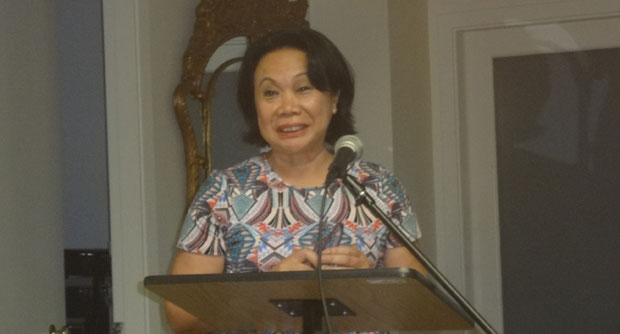SAN FRANCISCO, California — Days leading to November 8th were normal. Bright, sunny days. Quiet, calm nights. I arrived in Tacloban three days before and the only thing that would tell you that a Category 5 typhoon was expected was the constant airing of the public announcement on the radio imploring people living near the water to evacuate. The warning was stern and ominous.
The night before the typhoon was eerily tranquil. Only the croaking noise of the frogs disturbed the silence. There was no hint that a super typhoon was headed our way. Haiyan reached Tacloban a little before 7 a.m. My house was boarded up so we couldn’t hear the frightening sound of sustained 195-mile-per-hour winds, with gusts of up to 230 miles per hour. From conversations with other people who survived Haiyan or Yolanda, the noise from the wind was deafening. In less than an hour, I felt the power of the strongest typhoon in recent recorded history as it ripped open the top level of my house. Before the hour was done, Haiyan had already destroyed my home.
We huddled for safety in the only room on the first level, but as we prepared to put a mattress against the window, someone had noticed water gushing through the sides of the door. The moment we stepped away from the door, the surging water blew the door open. We ran towards the stairs, to one of the bathrooms left standing on the second floor. Seven people tried to keep safe in a bathroom without a roof, which made me realize the danger from flying debris.
We then decided to sit by the stairs and watch as the rising water knocked down anything that was standing upright. Water as high as eight feet. As quickly as the black water rose, it also receded fast. But the winds and the rain had not abated until about 11 a.m. Tacloban was pounded for about four hours.
We had managed to save some of the provisions but not much. The stove and the refrigerator were useless. I realized for everyone else to survive I needed to leave, otherwise I would be catered to. I decided to go to a friend’s house, which was a 20-minute walk during ordinary times. But this day was anything but ordinary. It took two hours of climbing over debris and dead bodies or dead animals. It seemed everyone was outside of their destroyed homes, taking stock of what had just happened. Everyone looked dazed. We all saw horrific sights of dead bodies, dead animals and toppled houses. Haiyan literally leveled the field — rich and poor were equal in their new status, that of a typhoon victim.
Just hours after Yolanda or Haiyan touched down on the city, looting had already started. I saw people with crates of beverages from the Coca-Cola bottling plant that had sustained major structural damage. While the motivation to loot was to look for something to eat or drink or to find medicines to take or put on wounds, there was also an element of criminality. By the following day, I personally saw two flat screen TVs on a pushcart headed somewhere.
There wasn’t a figure of authority to tell us all to calm down because everything would be all right. We needed to be told we were going to be okay, even if was just a lie. But no one came. No one was on a bullhorn, and we had no access to information. At night, the stillness was shocked by the sounds of guns firing. Suddenly I felt we all had lost our sense of security. I knew then I had to leave.
Two days after the typhooon, I made it to the airport to leave Tacloban, but never for good. I managed to get on a C130 headed to Cebu, to my mother-in-law’s house. I went back to Tacloban from Cebu four times to do relief work before I finally came home to San Francisco in January. I will be headed back again in a few weeks because there is still more to be done.
I have since worked with KUSOG TACLOBAN, a movement that was organized to help the people of Tacloban and Leyte in the aftermath of the super typhoon. We have distributed about 40 tons of relief goods, started a psychological support program for survivors, helped organize and assist in three medical and dental missions. We have also implemented a Mobile Soup Kitchen for kids that fed 3,000 to 5,000 kids since December and helped put tarps on 220 houses for under-served families.
Since November, we have brought in 150 volunteers from all over the world and the Philippines to help with all of the initiatives we have undertaken. We have been supported by donations from family and friends and strangers and our initiatives continue to this day.
KUSOG TACLOBAN is in the process of registering as an NGO both here in the US and in the Philippines to continue the mission we started. We can be found on Facebook and on our website: www.kusogtacloban.org.
